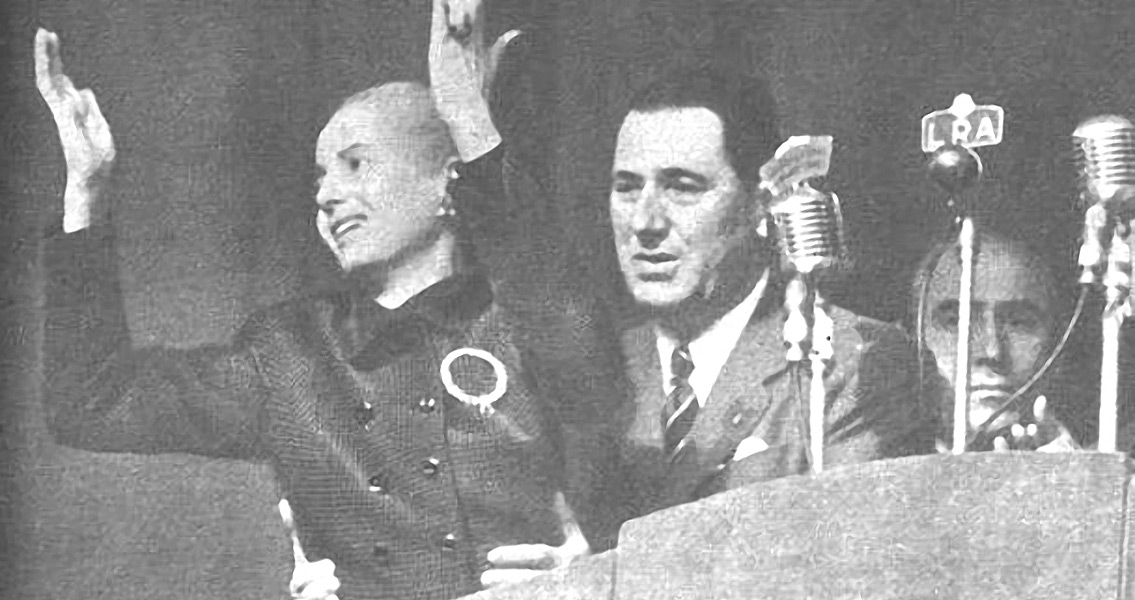<![CDATA[On 24th February 1946, Juan Domingo Peron was elected president of Argentina for the first time. Immortalised alongside his wife Eva Duarte in the hugely successful musical Evita, Peron was one of the most controversial figures in Argentine history. Peron's early life was typical of many Argentine men of his generation. At 16 he enrolled in military school, as a means to improve his social standing. He seemed well equipped for a career in the military, athletic and astute, he advanced swiftly through the ranks. In the late 1930s he was sent as a military attache to Italy and Germany, and witnessed the rise of fascist governments in the two countries. Influenced by what he had learnt in Europe, Peron returned to Argentina in 1941 and gained the rank of colonel in the country's military. In 1943 he joined the Grupo de Oficiales Unidos (GOU), a clandestine organisation of military figures that orchestrated a coup and ultimately overthrew Argentina's civilian government. Peron's influence grew in the military administrations that governed Argentina for the next few years. He became Minister of Labour, and in 1944 also took on the roles of vice-President and Minister of War. A combination of support from various elements of the military, combined with significant popular approval from Argentina's underprivileged labourers, saw Peron's power growing steadily. In October 1945, a group of Peron's military rivals, possibly motivated by concern at his growing power, removed him from his political positions and had him imprisoned. The plot against Peron failed, however. A combination of pleas from his charismatic and hugely popular mistress Eva (Evita), combined with appeals from his associates in labour unions, saw Peron released on the 17th October. That evening he addressed the people of Argentina from the balcony of the Presidential Palace, vowing to represent them in the impending presidential election. Peron won the 1946 election with 56 percent of the popular vote. His first two terms as president were marked by significant changes in Argentine society. Industrialisation accelerated dramatically, while the state gained increasing control over the economy. Transport networks and utilities were nationalised on a large scale, and huge investments were made into public works. Conscious of the support base that had facilitated his election, Peron's regime also installed better welfare for industrial workers, including social benefits and improved wages. Peron's presidencies were characterised by contradictions. He had been elected through massive popular support, which he continued to enjoy during his rule. Despite gearing his policies towards Argentina's impoverished masses however, he also relied on a host of authoritarian measures to prevent popular dissent. Using his control over the military, he restricted constitutional and civil liberties, and in 1949 rewrote the constitution to allow his reelection. Although an even larger proportion of the electorate had reelected Peron in 1951, he never reached the end of his term. In 1955 he was overthrown by a revolt led by army and navy officers who had become discontent with corruption and oppression throughout Argentine society. He fled the country, eventually settling in Madrid, where he lived in exile for eighteen years. Despite its leader's exile, the Peronist party became increasingly popular and organised in Peron's absence. The military regime of General Alejandro Lanusse, which took power in 1971, announced its intentions to restore constitutional democracy to the country. In 1973 Peronist candidates won the Argentine presidency and legislature in national elections. By June of that year Peron had returned to Argentina, and in October he was restored to the country's presidency. Peron only relinquished the presidency on his death in 1974. The era started with his election in February 1946 was a hugely significant and contradictory one in Argentine history, the consequences of which can still be felt.]]>
Peron's Election
